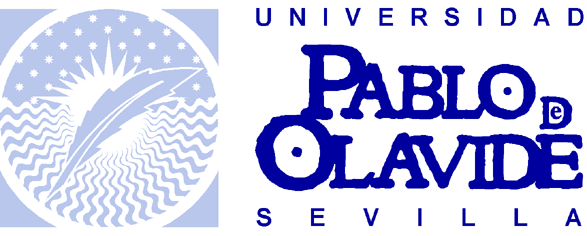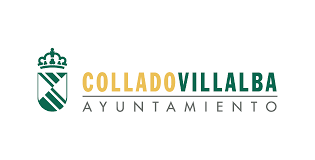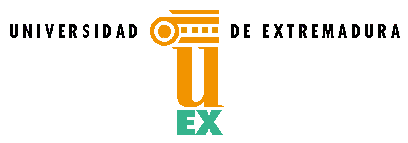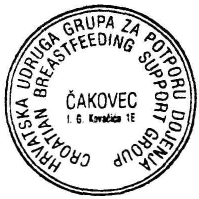powerpluswatermarkobject3 guideline on survey of surveys u nited nations office for the coordination of humanitarian affairs ref.
PowerPlusWaterMarkObject3 Guideline on Survey of Surveys
U nited Nations
Office for the Coordination of Humanitarian Affairs
Ref.
Guideline
Survey of Surveys
Approved by: Valerie Amos, Emergency Relief Coordinator and
Under-Secretary-General for Humanitarian Affairs
Approval date: xx October 2011
Contact: Chief, ISS/CISB
Review date: xx October 2013
GUIDELINE ON
SURVEY OF SURVEYS
Contents: A. Purpose
B. Scope
C. Rationale
D. Guidelines
E. Terms and definitions
F. References
G. Monitoring and compliance
H. Dates
I. Contact
J. History
A. PURPOSE
The purpose of this guideline is to outline the key components of the
Survey of Surveys (SoS). The SoS is a registry of the various
assessments that have taken place in a given emergency that is
compiled by OCHA with the intention of allowing the humanitarian
community to benefit from the assessment work of other groups.
Additionally, the SoS allows for the identification of gaps in
assessment coverage (by geography, sector, and/or time period). This
guideline is intended to define the SoS dataset and related
information products in order to increase standardization and
predictability of the SoS globally, while still allowing flexibility
to adapt the contents of the SoS to the local operational context.
B. SCOPE
This guideline applies to OCHA at the country level and should be of
interest to Information Management Officers (IMOs) tasked with
creating or maintaining OCHA’s core information products. Others in
OCHA or the humanitarian community who are involved in planning
assessments or monitoring and evaluation activities may also find the
guideline relevant. Adherence to this guideline is strongly
recommended for predictability. However, flexibility in the
application of the guidance to meet country specific, operational
needs is acceptable.
C. RATIONALE
The SoS is part of the minimum set of predictable, standardized
information products to be produced by OCHA at the country level in
collaboration with the cluster/sectors1. However, the contents,
technical approach, and visualizations of the SoS used by various
offices vary greatly. As OCHA seeks to standardize and make
predictable the information management protocols and products employed
globally, it has recognized that some guidelines are needed. At the
same time, flexibility must be maintained so that the SoS can be
adapted to the operational requirements of a given office.
Additionally, by allowing the identification of assessment gaps (in
geography, sectors, and/or time periods) the SoS is a key component
when planning assessments to support the consolidated appeal process
or other planning processes. It is also a component of the workflows
being developed by the IASC’s Needs Assessment Task Force2. As SoS
becomes integrated into other workflows within OCHA and the
humanitarian community, the need for standardization and
predictability increases.
D. GUIDELINES
Data, Metadata and Information Products
It is important to make distinctions among assessment data, metadata
that describes an assessment, and the information products derived
from the assessment data. The SoS does not attempt to hold the actual
assessment results, but rather to serve as a registry of information
that describes the assessments. This is the metadata. Collectively,
the metadata about all the assessments registered in the SoS form a
dataset. The dataset can be thought of as a table in which each record
(or row) represents a survey and each field (or column) represents a
piece of metadata about the survey (such as the sector, location,
date, etc.). This dataset can be presented in various information
products depending on the kind of questions that users need the
dataset to answer.
Key Metadata Elements
The key metadata elements for the SoS that should be included in any
implementation are listed in the table below. While more may be added,
increasing the information required to submit an assessment to the SoS
may decrease the number of assessments included or the frequency of
updates. The fields included here are only those that are essential
for using the SoS in gap analysis and allowing users to access
individual assessments identified from the SoS.
Definition of an Assessment
One of the potential complications of the SoS is that a single
assessment activity may actually generate multiple datasets. For
example, if an assessment generated health-related data in districts
A, B, and C and education-related data in Districts B, C, and D, it is
difficult to represent them in one SoS record. In these cases, the
assessment should be represented using multiple records to reflect the
distinct geographic and sectoral coverages.
Dataset Element
Description and Implementation
Title of the assessment
Text field for the name of the assessment
Sectorial Information
Clusters/Sectors covered by the assessment
Multi-select field listing the clusters/sectors defined for the
emergency. Depending on the solution used to visualize the data, it
may be necessary to have multiple pick-list fields, each allowing the
selection of one of the clusters/sectors.
Subsectors covered by the assessment
In its most simple form, this is an optional text field allowing users
to provide sub-sectorial detail. More sophisticated implementations
will include context sensitive pick-lists which appear with the
relevant sub-sectors when the cluster/sector field is completed.
Methods
Unit of Measure
If the assessment is a structured survey, this is a text or pick-list
field indicating the unit of measure represented by each data point in
the assessment. For example, household, settlement, and individual
could all be valid values. Note that it is common for there may be no
consistent unit of measure in an assessment conducted during the early
phases of a sudden onset emergency.
Methdology
A text field for describing the method by which the assessment was
conducted.
Location Information
Location of the assessment
To allow mapping (either geographic or in a matrix) of the
assessments, it is critical that the location information be tied to
the CODs for Administrative Boundaries and (potentially) the Populated
Places COD. As such the field(s) capturing this data must be well
structured. In its most simple form, this data element may be captured
by a single pick-list field which contains a concatenation of every
possible combination of all admin levels deemed relevant for the SOS.
The drawback to this approach is that it requires the user to enter
the same survey multiple times for each of the lowest-level admin
units (or populated places) covered by the assessment. A more
sophisticated relational database implementation of the SoS would
allow the user to add an unlimited number of location records to a
given survey. See note below on geographic complications.
More details about the location
This is an optional text field which may be required to allow the
entry of specific location details that may not be captured in the
“Location of the assessment” data element, such as neighborhoods or
other geographic references that may not be captured in the Admin
Boundaries or Populated Places COD. See note below on geographic
complications.
Date and Status Information
Status of the assessment
A pick-list of Planned, Ongoing, Field-work Completed, Report
Completed
Starting date of the assessment
Date field for the starting date or intended starting date of a
planned assessment
Ending date of the assessment
Date field for the ending date or intended ending date of a planned
assessment
Frequency
If the assessment is intended to be repeating, what is the intended
frequency
Access Information
Accessibility of the report or data
A pick-list of Publicly Available, Available on Request, Restricted
Distribution, Not Available
How to obtain the report or data
A text field for instructions on how to obtain the report or
associated datasets. Ideally this is a link to a copy of the
assessment report and/or datasets on the interagency website for the
emergency.
Contact name and telephone
An optional text field for contact name and telephone
Contact email
An optional text field for contact email
Geographical complications may arise when the relevant areas in which
assessments are conducted do not correspond to the available admin
boundaries or populated places. In urban environments, neighborhoods
may be a convenient way for describing the location of an assessment,
but there may be no fixed boundary for mapping. In such circumstances,
it may be desirable to create an artificial set of admin boundaries
for the SoS. However, creating such a dataset may run the risk of
humanitarian actors using that dataset to manage their activities,
leading to misalignments between national and the various humanitarian
data systems.
Information Products Derived from the SoS
Although the SoS may be presented as a table like that described
above, such a visualization may not support the kinds of questions
users may ask of the SoS. There are two primary use cases that drive
the need for the SoS. Each implies a different visualization to
satisfy the use case.
*
Use Case 1: Reviewing a geographic area. The user is seeking
information about a particular geographic area. Typically such
users are NGOs or other humanitarian actors who are considering
working in an area with which they are not familiar. The SoS in
this use case serves as a register of previous assessments,
allowing the users to identify documents that should be consulted
as background to their current efforts. At its most basic, the
visualization of the dataset can be a simple table, sorted by
geographic, sectorial, and date fields.
*
Use Case 2: Identifying gaps. The user wants to identify gaps in
assessment knowledge. These gaps may be geographic, in which a
certain region has not been assessed, sectorial, in which a
certain region has not been assessed for particular sectors, or
temporal, in which a certain region has not been assessed for
particular sectors within some recent time period. For this use
case, tabular visualizations of the SoS dataset are particularly
cumbersome. A much better approach is to produce a series of maps
(or an interactive map) which allows the user to see which
administrative units have been covered by an assessment within a
given sector within a given time period (usually the last few
weeks or months). This use case is particularly relevant as part
of assessment planning to support the launch of a new or revised
funding appeal.
Roles and Responsibilities in the SoS
The Operational Guidance on Responsibilities of Cluster/Sector Leads &
OCHA in Information Management specifies that the SoS is the
responsibility of the OCHA at the country level, but it is to be
produced in collaboration with the clusters/sectors. To further
clarify, it is OCHA’s responsibility to create and maintain a system
for storing the SoS data and to create information products based on
it. OCHA also has the responsibility to advocate for the use of the
tool and to coordinate networks and information flows for the timely
updates of information. Referencing cluster guidance for effective
management of information, it is the role of the clusters to provide
the metadata about assessments to populate the SoS. Additional key
collaborative partners include UNDP/BCPR which rely on this
information for Post Disaster/Conflict Needs Assessments (PDNA, PCNA)
and UNFPA who are essential partners in demographic data collection
and maintenance. These partners have a shared responsibility in
advocating for the use of the SoS and providing inputs to the
collaborative SoS mechanism.
E. TERMS AND DEFINITIONS
COD: Common Operational Datasets. See IASC Guidelines on Common
Operational Datasets (CODs) in Disaster Preparedness and Response.
F. REFERENCES
Normative or superior references
Operational Guidance on Responsibilities of Cluster/Sector Leads &
OCHA in Information Management:
http://www.humanitarianinfo.org/iasc/downloaddoc.aspx?docID=4911&type=pdf
IASC Operational Guidance for Coordinated Assessments in Humanitarian
Crisis:
http://oneresponse.info/resources/NeedsAssessment/publicdocuments/Operational%20Guidance%20for%20Endorsement%20-%20%20Final%20Version.pdf
IASC Guidelines on Common Operational Datasets (CODs) in Disaster
Preparedness and Response:
http://oneresponse.info/resources/imtoolbox/publicdocuments/IASC%20Guidelines%20on%20Common%20Operational%20Datasets%20in%20Disaster%20Preparedness%20and%20Response%201%20Nov.%202010.pdf
G. MONITORING AND COMPLIANCE
Monitoring of adherence to this guideline is part of the overall
evaluation of a country office’s performance on production of the core
set of OCHA products. Specific process and impact indicators should be
monitored at defined frequencies to monitor the initiation, use and
impact of the SoS with appropriate feedback channels in place to
adjust the SoS to the needs of a specific operation.
H. DATES
Effective Date: This Guideline is valid as of xx October 2011.
Review Date: This Guideline will be reviewed with the relevant focal
points no later than two years from the approval date.
I. CONTACT
The contact for this Guideline is the Chief of Section of ISS/CISB
J. HISTORY
There was no Guideline on the subject prior to this document.
SIGNED:
DATE:
1 Operational Guidance on Responsibilities of Cluster/Sector Leads &
OCHA in Information Management:
http://www.humanitarianinfo.org/iasc/downloaddoc.aspx?docID=4911&type=pdf
2 IASC Operational Guidance for Coordinated Assessments in
Humanitarian Crisis:
http://oneresponse.info/resources/NeedsAssessment/publicdocuments/Operational%20Guidance%20for%20Endorsement%20-%20%20Final%20Version.pdf
7
 9 (9) ITUPPHANDLINGEN DNR 936909 FFU205 EFÖRVALTNINGSSTÖDJANDE TJÄNSTER 2010
9 (9) ITUPPHANDLINGEN DNR 936909 FFU205 EFÖRVALTNINGSSTÖDJANDE TJÄNSTER 2010 HTTPSWWWIAGUAESNOTICIASYOBEBOAGUADELGRIFO MARÍA JOSÉ MARTÍN MURILLO EL AGUA DE
HTTPSWWWIAGUAESNOTICIASYOBEBOAGUADELGRIFO MARÍA JOSÉ MARTÍN MURILLO EL AGUA DE SOLICITUD DE AUTORIZACIÓN PREVIA PARA TITULADOS CONFORME A SISTEMAS
SOLICITUD DE AUTORIZACIÓN PREVIA PARA TITULADOS CONFORME A SISTEMAS 20210615 NOMINERINGSVAL AV ARBETSPLATSOMBUD FÖR PERIODEN 17 2021 –
20210615 NOMINERINGSVAL AV ARBETSPLATSOMBUD FÖR PERIODEN 17 2021 – ANEXO 11 BOLETÍN DE PRESENTACIÓN MODELO PARA PERSONAS FÍSICAS
ANEXO 11 BOLETÍN DE PRESENTACIÓN MODELO PARA PERSONAS FÍSICAS HTTPWWWOXENCURRAISCOMBRCONTEUDO?ID15&PHPSESSID6972B6F52BA56D4B993C47F6E1F29F50 EFEITOS DO TRANSPORTE NO BEMESTAR E NA QUALIDADE
HTTPWWWOXENCURRAISCOMBRCONTEUDO?ID15&PHPSESSID6972B6F52BA56D4B993C47F6E1F29F50 EFEITOS DO TRANSPORTE NO BEMESTAR E NA QUALIDADE Patrick an Introduction to Medicinal Chemistry 3e Chapter 04
Patrick an Introduction to Medicinal Chemistry 3e Chapter 04 20 DISTRICT HEALTH BOARDS PUBLIC HEALTH SERVICES MENTAL
20 DISTRICT HEALTH BOARDS PUBLIC HEALTH SERVICES MENTAL LAUSUNTO VANHUS JA VAMMAISPALVELUT HYTO3 TYÖSUOJELU 642021 VUORINEN ANNE
LAUSUNTO VANHUS JA VAMMAISPALVELUT HYTO3 TYÖSUOJELU 642021 VUORINEN ANNE OBJECTIVES STUDENTS WILL UNDERSTAND THE FOLLOWING 1 SHARKS EXHIBIT
OBJECTIVES STUDENTS WILL UNDERSTAND THE FOLLOWING 1 SHARKS EXHIBIT IES “FUENTE DE LA PEÑA” (JAÉN) SELECCIÓN DE “TEXTOS”
IES “FUENTE DE LA PEÑA” (JAÉN) SELECCIÓN DE “TEXTOS” CURSOS DE NIVELACIÓN ORGANIZADOS POR EL VICERRECTORADO DE ESTUDIANTES
CURSOS DE NIVELACIÓN ORGANIZADOS POR EL VICERRECTORADO DE ESTUDIANTES B1D2 KRITÉRIA UDRŽATEĽNOSTI KRITÉRIÁ PRE OBSAHOVO ORIENTOVANÚ INTEGRÁCIU
B1D2 KRITÉRIA UDRŽATEĽNOSTI KRITÉRIÁ PRE OBSAHOVO ORIENTOVANÚ INTEGRÁCIU NA TEMELJU ČLANKA 11 ZAKONA O UDRUGAMA (NARODNE NOVINE
NA TEMELJU ČLANKA 11 ZAKONA O UDRUGAMA (NARODNE NOVINE INTERNATIONALT ARBEJDSGRUPPEMØDE D 12 OKTOBER 2010 DELTAGERE KJELD S
INTERNATIONALT ARBEJDSGRUPPEMØDE D 12 OKTOBER 2010 DELTAGERE KJELD S